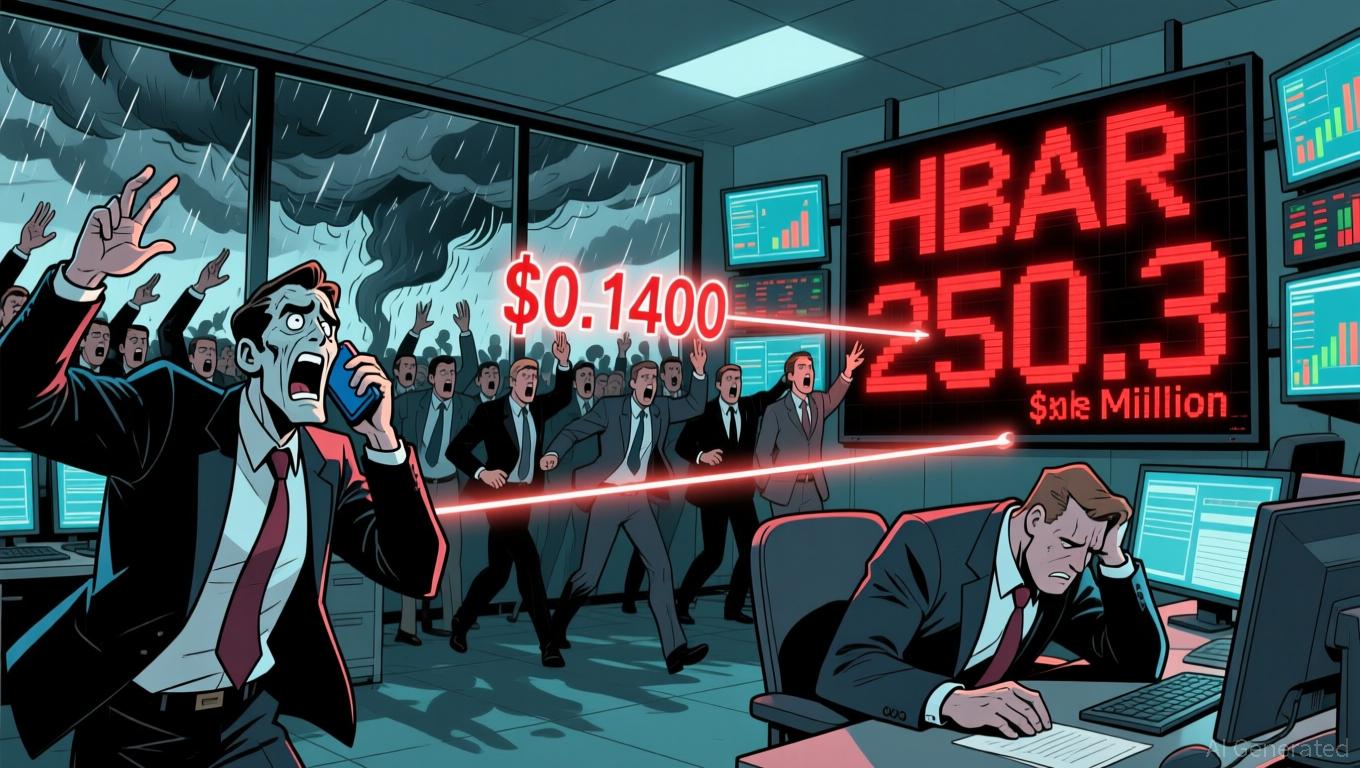Institutional Investment in ADA and BlockDAG’s Rapid Growth Face Challenges Amid Fed’s Unpredictable Crypto Policies
- Cardano (ADA) sees whale accumulation of 200M tokens ($157M) as institutional interest and ETF approval odds rise to 75%. - BlockDAG hits 3M users, driven by DeFi growth and Layer 2 innovations, challenging Ethereum/Solana in cross-border payments. - Fed's 2025 rate cut and hawkish pivot trigger $1.1B crypto liquidations, with altcoins like XRP/Solana facing sharper declines. - ADA's $0.82–$0.83 resistance breakout could target $0.93–$1.08, but regulatory delays and inflation risks cap short-term gains.

References: [1] title1 [2] title2 [3] title3 [4] title4 [5] title5 [6] title6 [7] title7 [8] title8 [9] title9 [10] title10 [11] title11 [12] title12 [13] title13 [14] title14
---
Cardano (ADA) and the BlockDAG blockchain have become central topics in the crypto sector as institutional involvement and user numbers rise. Activity from large Cardano holders has grown, with major investors acquiring more than 200 million
Cardano’s price movement has captured attention as it approaches significant resistance points. The recent purchase of 200 million ADA—worth $157 million—by whales has lifted the coin’s market capitalization, with many long-term holders retaining their positions since 2021. The likelihood of a U.S. spot Cardano ETF being approved has risen to 75% on prediction platforms, fueled by Grayscale’s application and interest from institutions like 21Shares. Chart analysis indicates ADA could break out of its current descending triangle if it surpasses resistance around $0.82–$0.83, potentially aiming for $0.93 or even $1.08.
BlockDAG’s user count reaching 3 million highlights its growing influence in decentralized finance (DeFi) and international payments. This expansion matches the broader movement toward blockchain adoption, especially in areas looking for scalable financial solutions. Experts credit BlockDAG’s Layer 2 advancements and collaborations with major institutions for boosting transaction speed and lowering fees. This user milestone has prompted speculation about BlockDAG’s ability to compete with
The overall crypto market remains highly responsive to economic developments. The Federal Reserve’s 25-basis-point rate cut in September 2025 initially lifted risk assets, but a more cautious message from Chair Jerome Powell soon led to a sell-off in
Institutional investment patterns have shifted as well, with Bitcoin and Ethereum ETFs seeing inflows, while altcoin ETFs experience withdrawals. Grayscale’s addition of ADA to its Digital Large Cap Fund and Smart Contract Fund has increased institutional exposure, though overall market sentiment remains cautious. Cardano’s ecosystem, bolstered by upgrades like Hydra and Acropolis, has improved its technical base, but regulatory uncertainty—especially regarding ETF approvals—continues to be a challenge.
Market watchers are paying close attention to the relationship between economic policy and blockchain activity. While whale accumulation in Cardano and BlockDAG’s growing user base point to optimism, risks remain. Delays in regulation, ongoing inflation, and high leverage in derivatives could limit short-term progress. Still, a more accommodative stance from the Fed or approval of a Cardano ETF could spark a broader rally, particularly for assets with strong institutional support.
As the year unfolds, the direction of the crypto market will depend on achieving a balance between regulatory progress, economic stability, and technological innovation. Cardano’s efforts to break through resistance and BlockDAG’s expanding community showcase the industry’s durability. Nevertheless, investors should stay alert to volatility, as global tensions and central bank actions continue to impact liquidity and market sentiment.
---
References: [1] title1 [2] title2 [3] title3 [4] title4 [5] title5 [6] title6 [7] title7 [8] title8 [9] title9 [10] title10 [11] title11 [12] title12 [13] title13 [14] title14
Disclaimer: The content of this article solely reflects the author's opinion and does not represent the platform in any capacity. This article is not intended to serve as a reference for making investment decisions.
You may also like
The Emergence of ICP Caffeine AI and Its Impact on Decentralized Computing Markets
- ICP Caffeine AI, developed by DFINITY, redefines decentralized compute by enabling AI app development via natural language and reducing inference costs by 20–40%. - Its reverse-gas token model and "chain-of-chains" architecture boost scalability while creating deflationary incentives, attracting $237B TVL but facing 22.4% dApp activity declines. - Competitors like Palantir ($1.18B Q3 revenue) and struggling BigBear .ai highlight ICP's unique censorship-resistant niche, though centralized rivals maintain
Hyperliquid News Today: Reduced Fees or Doubts? Hyperliquid’s Bold Strategy for Expansion
- Hyperliquid, a top-20 DeFi exchange, faces a 25% HYPE token price drop to $25 amid market volatility and declining investor confidence. - Its HIP-3 Growth Mode initiative slashes trading fees by 90% to attract new markets but has yet to reverse downward trends or boost liquidity. - Analysts warn fee cuts may not address long-term user retention challenges in a crowded DeFi landscape dominated by centralized rivals like Binance. - Market skepticism persists as traders await volume explosions and tighter s
Bitcoin News Today: Bitcoin ETFs See $2.96B Withdrawals as Investors Seek Greater Macro Certainty
HBAR Drops 11.5%: Institutional Withdrawals and Liquidity Challenges Highlight Market Vulnerability
- HBAR token plummeted 11.5% on Nov 21 as institutional selling overwhelmed markets, breaking key support at $0.1350 and triggering stop-loss cascades. - Preceded by prior declines including 6% drop on Nov 18 and 180%+ volume spikes, forming descending channel patterns signaling deteriorating market structure. - Liquidity crises emerged with 250M-token sell wave (98% above average) and trading halts, exposing fragile infrastructure amid crypto market cap falling below $2.9T. - Institutional distribution do
